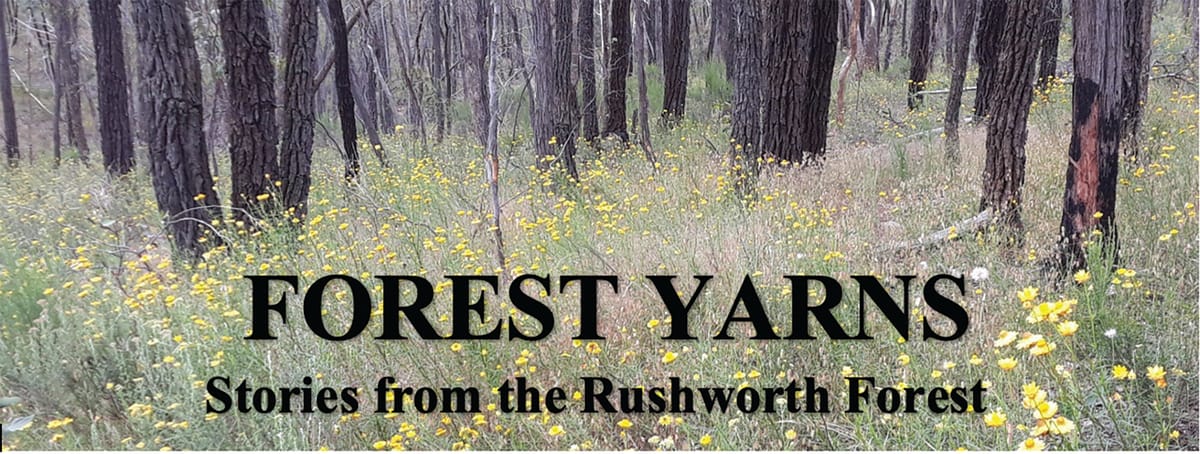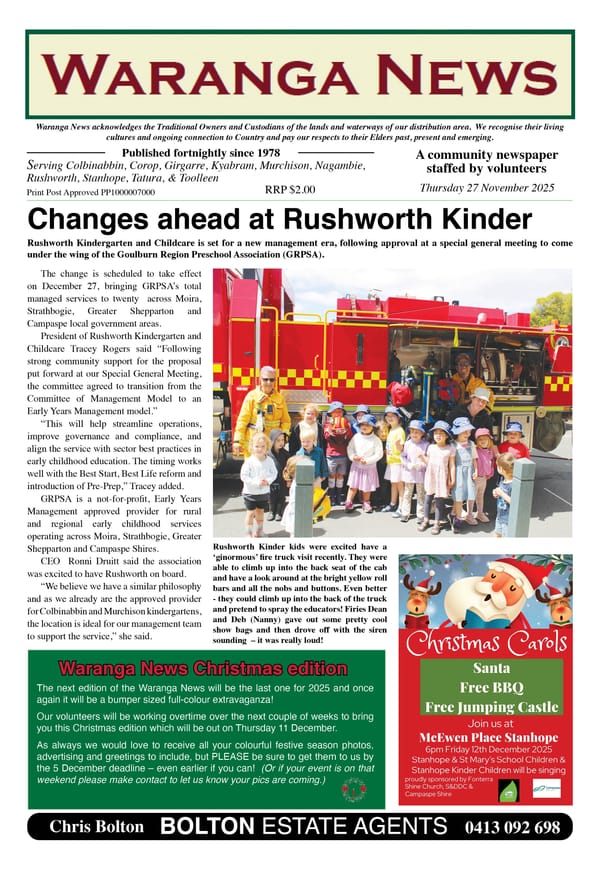Rushworth Railway Station

Rushworth railway station was the hub around which the timber industry, and particularly the firewood industry, was organised. As has been noted in previous stories, the line from Murchison to Rushworth was completed in 1890. A siding was constructed at the Rushworth station in 1899, along which the timber mills were set up after that date. The railway line was extended to Colbinabbin and Stanhope at the time of the First World War.
The siding on the north side of the station between the existing goods shed and Station Street was the site of the wood mills. The station itself and the silos used to be on the south side of the tracks opposite the goods shed. Unfortunately, the silos were removed some years back. There were also sheep and cattle yards on the north side of the tracks, and other infrastructure such as a water tank, a locomotion turntable and an ash pit.
Heritage report
There is a report on the Victorian Heritage Database which provides a detailed history of the station, so this story will simply pick up a few of the salient points that refer to the timber industry.Firewood and wheat comprised the main outgoing goods products.
Firewood loading gradually decreased as other sources of heating became available to consumers. This led to the proposed closure of the dead-end siding in 1914, which was also precipitated by the extension of the line to Colbinabbin. Mills were set up at Erwen (Moora), Wanalta and Colbinabbin, which further reduced the demand for facilities at the Rushworth station.
Extension to Colbo
In 1910 there was a review into the possible extension of the line to Colbinabbin, and perhaps even further to Bendigo. It was reported that “a large amount of timber was already being transported from the Rushworth Station and that a station at Colbinabbin would assist in the distribution of firewood to the Melbourne market.
Seven traction engines, besides farmers’ (horse) teams, were hauling firewood into Rushworth from the parishes of Wanalta and Gobarup…”In those parishes are large quantities of box and ironbark timber which were rung several years ago, and are suitable for the Melbourne market.”1
Potential loss of loading facilities
In late 1913, prior to the extension of the railway line to Colbo, there was concern from the timber getters, sawmillers and others about the potential loss of loading facilities at the station. “Timber has hitherto been loaded onto trucks at a dead end (i.e. of the siding) alongside which there is a high embankment and so convenient is this place that carters have preferred to take their loads there rather than to stations a shorter distance from where they start.”2
The Rushworth folk came up with a practical scheme under which the existing facility could be retained. A deputation, “representing carters, (sleeper) hewers, Rushworth traders, grain buyers and the Forestry Department” was planned, to put the matter before the Railway Commissioners. They first gained the support of the Waranga Shire Council.
An employee of the Victorian Railways was subsequently sent up to make a report and apparently viewed the local solution as reasonable. By February 1914, the council had been advised “that it has been resolved to grant a special loading site at the Rushworth railway station whereby poles, sleepers and grain can be loaded by gravitation. He (Cr McKee) was assured that the plans were all in readiness for the work, and that when completed the facilities for loading will be greater than ever.”3 A win for the locals.
Decline in rail usage
As the 20th century progressed, there was a gradual decline in the freight that was carted by train. This was due to the reduction in the amount of timber that was being taken out of the Rushworth forest, but also the development of road transport. This was particularly the case after World War 11. The station continued to operate in a reduced capacity, mainly catering for the grain industry. Passenger transport ceased in the late 1950s and the Rushworth station building was removed in 1969. The station precinct officially closed in 1987 but may get some new life with the recent completion of the walking and cycling trail to Murchison.
References: 1 Victorian Heritage Database Report: Former Rushworth Railway Station; 2 The Age 13.11.1913; 3 Kyabram Free Press 10.2.1914
Forest nature note
It is worth keeping an eye out for dragonflies at any time, as there are many different species and they mature at different times of the year. Sometimes, an irruption occurs when a whole lot of dragonflies emerge at once. Near water is the best place to observe them. After mating while flying (giving new meaning to the term “mile high club”) females can deposit up to 10,000 eggs at a time into water, where they later hatch as nymphs. They are your friends, because the nymphs can feed on up to 40 mosquito nymphs a day, while adult dragonflies will eat adult mosquitoes and other pests.




